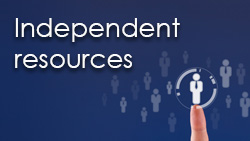

The union and the company come together for a series of meetings to reach an agreement on a union contract.
During these meetings, the union is allowed to ask for the things it’s promised you, but it’s also allowed to ask for things the union wants, things that you might not care about at all.
And the union can trade away things that you do care about to get what they want.
No time limit.
Bargaining can take months or years. In fact, according to a Bloomberg Law Analysis of first contracts, the average time to negotiate a first contract is currently 465 days.
No improvements.
The Company must maintain the “status quo” and cannot make new changes to wages, benefits or working conditions during bargaining.
No guarantees.
By law, there's no guarantee or requirement that a contract ever be reached.
Everything's on the table.
Your wages, benefits, vacations and holidays may be traded away by your union negotiator.
In a typical clause, you'll see language that says the company has the right to allocate its resources, manage its facilities and direct the workforce. It often also gives management the right to hire, promote, transfer, demote, layoff employees, to subcontract or contract out work, to establish and modify policies, rules and regulations governing safety, performance, procedures and conduct.
Basically, the company still runs the business, union or not.
The National Labor Relations Board has ruled that:
"...collective bargaining is potentially hazardous for employees and that as a result of such negotiations employees might possibly wind up with less after unionization than before." -- Coach and Equipment Sales Corp., 228 NLRB 440
There are no quick fixes and when it's all over, you could even end up with LESS than what you have right now. The law clearly says that although employees may get more with collective bargaining, they can also end up with the same as they had before the union and may actually end up with less.
This website is designed as a resource for our colleagues and their families as they consider their options regarding unionization in today's workplace. The decision of whether or not to be represented by a union is an important one, for many reasons. More ››
If you have any questions, please ask here; or, reach out to any of your managers or supervisors and we will be happy to answer any of the questions that you may have.
Casting your vote is extremely important. Don't let other people decide your future without having a say. The election outcome will be determined by the majority of the colleagues who vote. More ››

We are committed to answering your questions and to providing you important facts to consider before you decide if you want to entrust your job and your future to the Teamsters. Some independent resources you may want to contact and research:
Center for Independent Employees (Free Legal Advice)
National Right to Work Foundation (Free Legal Advice and Information)

To learn more about unions, check out these resources:
Calculators: Dues | Investment | Strikes